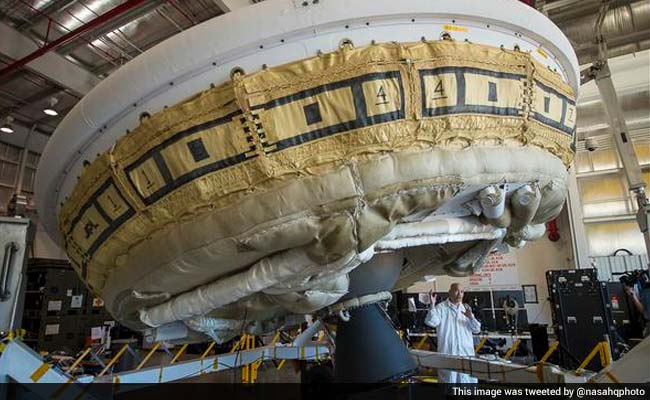|
|
|
|
|
|
| |
| |
By Category |
 |
|
|
| |
|
| |
| |
India On Media |
 |
|
|
| |
|
| |
|
|
| Politics
News |
|
| NASA Tests 'Flying Saucer' Device |
| NASA Tests 'Flying Saucer' Device for Future Mars Landings
|
| UNITED STATES OF AMERICA
, 8-June-2015
17:54:29 PM |
| NASA launched a giant balloon Monday carrying a kind of "flying saucer" that will test technologies for landing on Mars.
The aircraft is fitted with the largest parachute ever constructed.
After several days of weather-related delays, the helium balloon was launched from a military base in Hawaii and was to rise for about two hours.
It was the second test of the saucer-like device called the Low-Density Supersonic Decelerator.
During the first test in June 2014, the parachute shredded to pieces on the way down. NASA modified the design.
Since the atmosphere on Mars is so thin, any parachute that helps a heavy, fast-moving spacecraft touch down needs to be especially strong.
The US space agency figured out how to do this decades ago, beginning with the Viking mission that put two landers on Mars in 1976.
But with the goal of sending humans to Mars in the 2030s, the agency is now testing a more advanced, new generation of parachute technology, known as the Supersonic Ringsail Parachute.
It could allow even heavier spacecraft - the kind that may have humans and months of food and supplies on board - to land softly.
The test vehicle - the "flying saucer" - weighs 6,808 pounds (3,088 kilograms), or about twice the weight of the kind of robotic rover spacecraft NASA is currently capable of landing safely on Mars.
The parachute, described by NASA's Jet Propulsion Laboratory as "the largest parachute ever deployed," is 100 feet (30 meters) in diameter.
The goal is for the chute to "slow the entry vehicle from Mach 2 to subsonic speeds," NASA said.
|
|
|
|
|
|
|
|
ADVERTISEMENTS
Free offer!!! Become an administrator for your zip home page, "Post" local news (local to your postcode)& pictures, "Post" advertisement banners from local companies. Make Extra money.
|
 |
 |
|
|
| |
|



